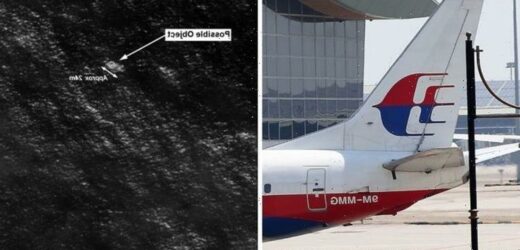MH370: Expert says the official narrative is a ‘fabrication’
We use your sign-up to provide content in ways you’ve consented to and to improve our understanding of you. This may include adverts from us and 3rd parties based on our understanding. You can unsubscribe at any time. More info
Malaysia Airlines Flight MH370 departed Kuala Lumpur International Airport on March 8 2014, headed for Beijing, China with 239 people on board. The crew of the Boeing 777 last communicated with air traffic control around 38 minutes after takeoff while travelling over the South China Sea. Minutes later, it disappeared from air traffic control’s radar screens. Military radar continued to track the flight for another hour, as it deviated westwards from its planned flight path.
After crossing the Malay Peninsula and Andaman Sea, it left radar range around 200 nautical miles (370 km) northwest of Penang Island in the northwestern Peninsular Malaysia.
The search for the plane began in the South China Sea and Andaman Sea, before analysis of automated communications with an Imarsat satellite shifted attention to the southern Indian Ocean.
The most expensive search in aviation history was unsuccessful, and a private second search launched in 2018 also ended without success.
Peter Foley was the program director for the first search led by the Australian Transport Safety Bureau.
Hundreds of people helped search an area covering some 120,000 square kilometres of the southern Indian Ocean seafloor.


Mr Foley, however, remains convinced that the doomed flight will be found.
He told The Guardian last year: “It is almost inconceivable and certainly societally unacceptable in the modern aviation era… for a large commercial aircraft to be missing and for the world not to know with certainty what became of the aircraft and those on board.
“It’s one of those things that will enthral people until the mystery is solved.
“It is a mystery that must be solved and will be solved eventually.”
Various theories have been touted as to what might have happened to MH370.

Among the theories have been a possible hijacking, but no group has ever claimed responsibility.
Conspiracy theorists have speculated North Korean involvement, black holes and more. Others have suggested a possible hijacking or a murder/suicide plot by the pilot.
None of these, however, have ever been confirmed.
Aerospace engineer Richard Godfrey helped the search for the wreckage.
When aircraft travel, they emit radio waves, which are detected by the weak signal propagation report network.
DON’T MISS:
MH17 linked to MH370 by researcher who claimed Russia sent message [QUOTES]
MH370: Retired British engineer claims to have ‘pinpointed’ site [INSIGHT]
MH370: Zaharie Shah’s ‘friend’ received heartbreaking note [REVEALED]

Mr Godfrey looked at disturbances in the radio waves, and mapped these together with satellites pinging the plane, to help “fill in some of the gaps and help us to know more precisely where MH370 crashed”.
His findings, he told The Guardian, suggest the pilot “laid false trails to confuse authorities before plunging into the southern Indian Ocean”.
This, in turn, suggests the pilot was fully aware of what he was doing.
Dr Ian MacLeod, one of the world’s leading shipwreck experts, told the newspaper that the wreckage could still be very well preserved.

He speculated that it could be “remarkably unchanged”, with the windows popped out by the pressure on the sea bed, but the main tube still intact.
If the plane settled on a hard surface, for example rock, then it could be very well preserved. If it had sunk into silt, however, much of the aluminium would likely have corroded.
Some 20 pieces of debris had been recovered from beaches in the western Indian Ocean by October 2017, with 18 of these identified as being “very likely or almost certain to originate from MH370”.
Searches around Réunion, an island in the western Indian Ocean, resulted in the discovery of a damaged suitcase, a Chinese water bottle and an Indonesian cleaning product.
Likewise, debris found on a beach in southern Mozambique featured lettering that matched the style used by Malaysia Airlines.
This has not stopped other speculation, however. Texas A&M University’s maths professor Goong Chen argued that MH370 must have entered the sea vertically — any other angle of entry, he argued, would have seen the plane splinter into many pieces.
Mr Foley remains determined to find the wreckage. Though he is retired now, he told The Guardian that he is “extraordinarily keen” for a new search, as the families of the 239 on board still need answers.
He said: “Whether it’s pure dumb luck and a fisherman picks up a piece of debris on a long line or whether it’s an advance in technology that allows us to search in great detail large areas of the ocean floor or whether it’s a philanthropist who uses existing technology … it will be found.”
Source: Read Full Article

